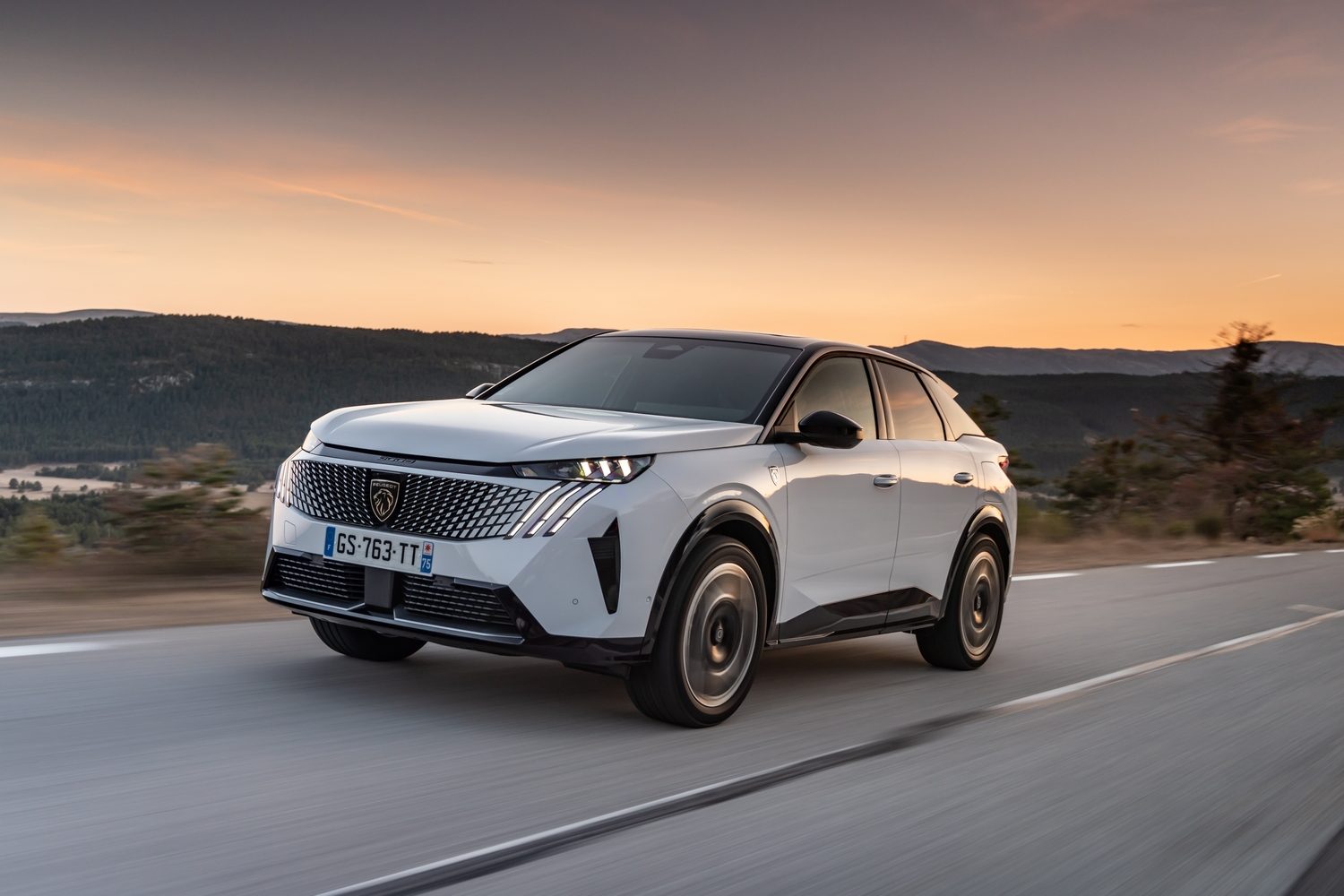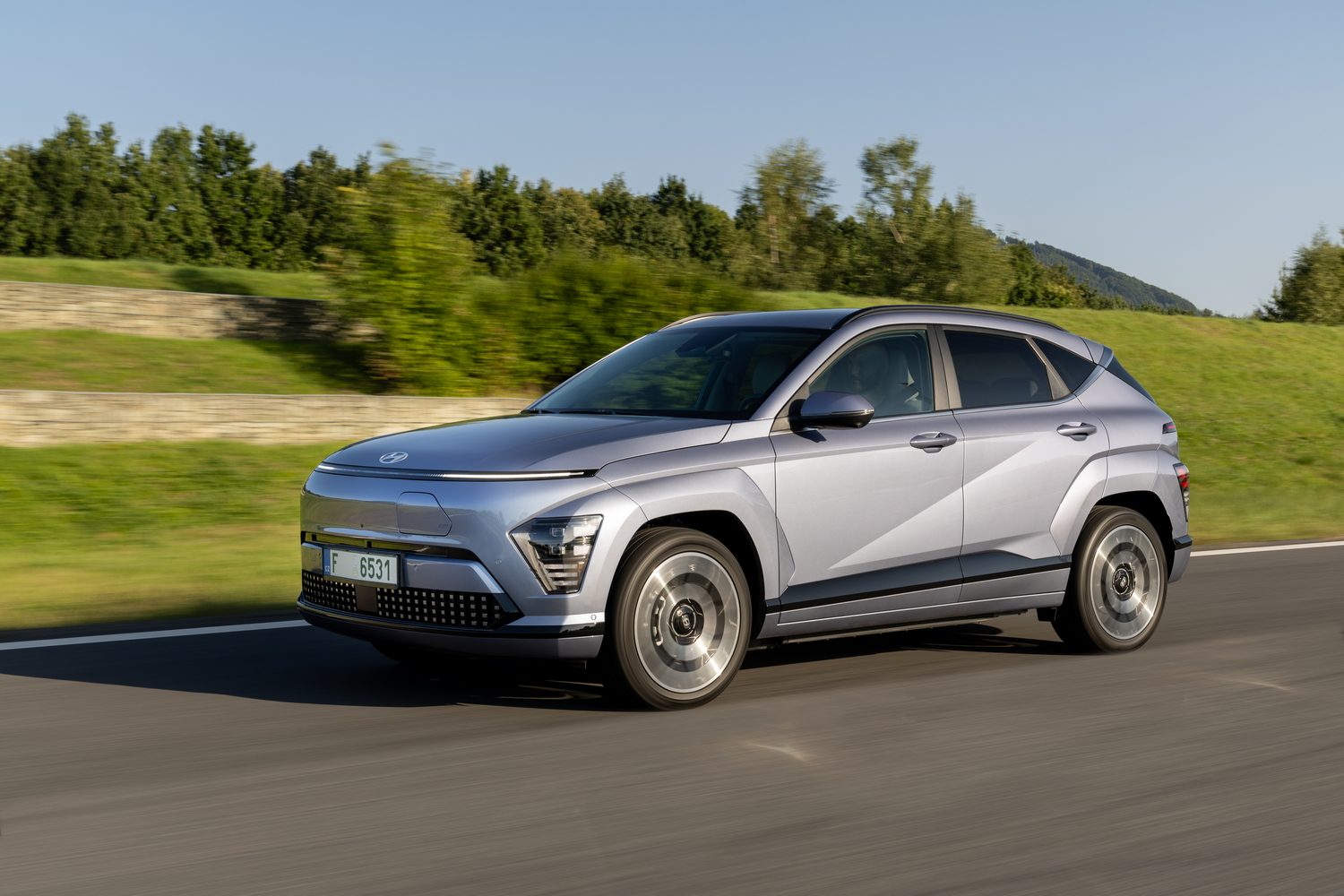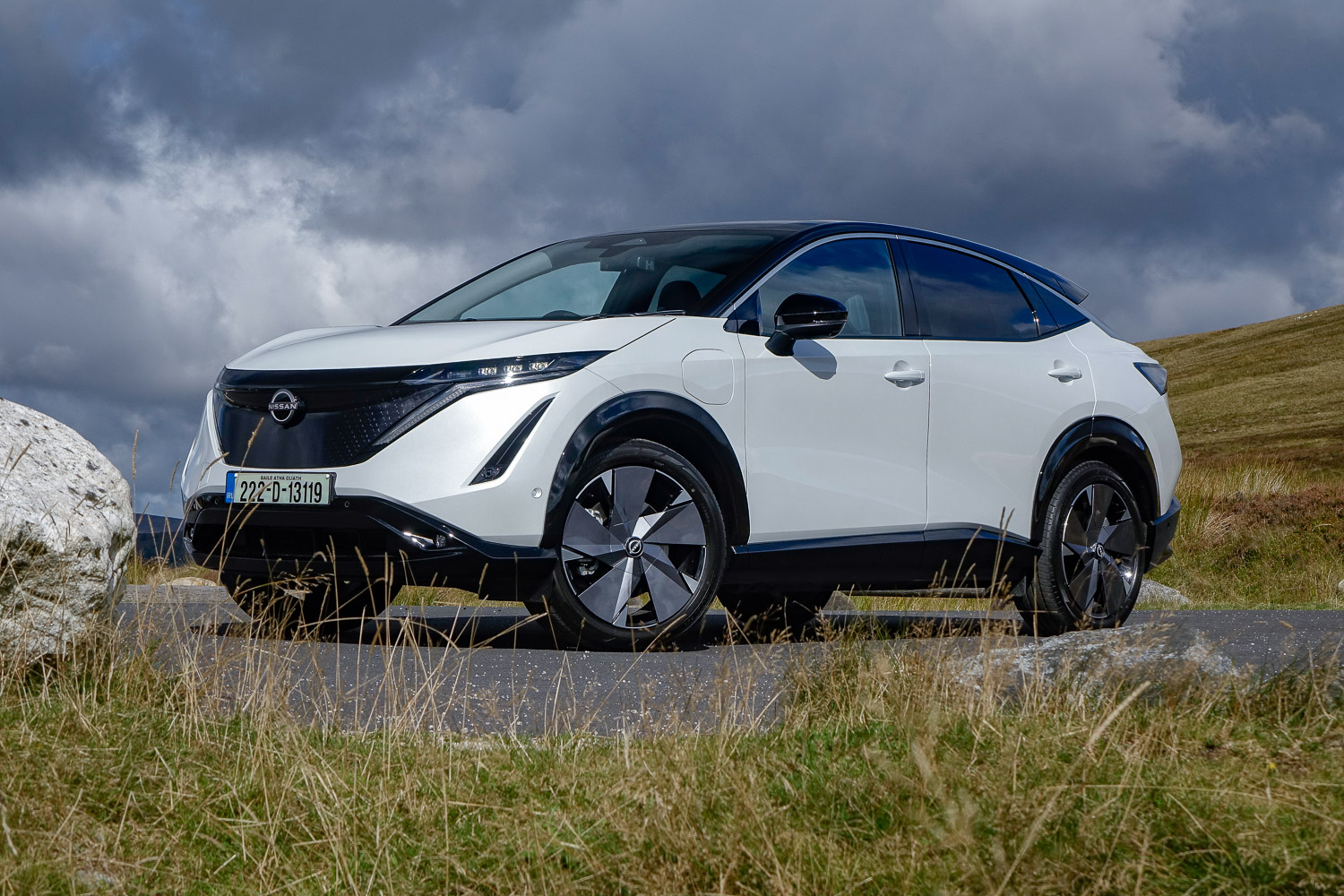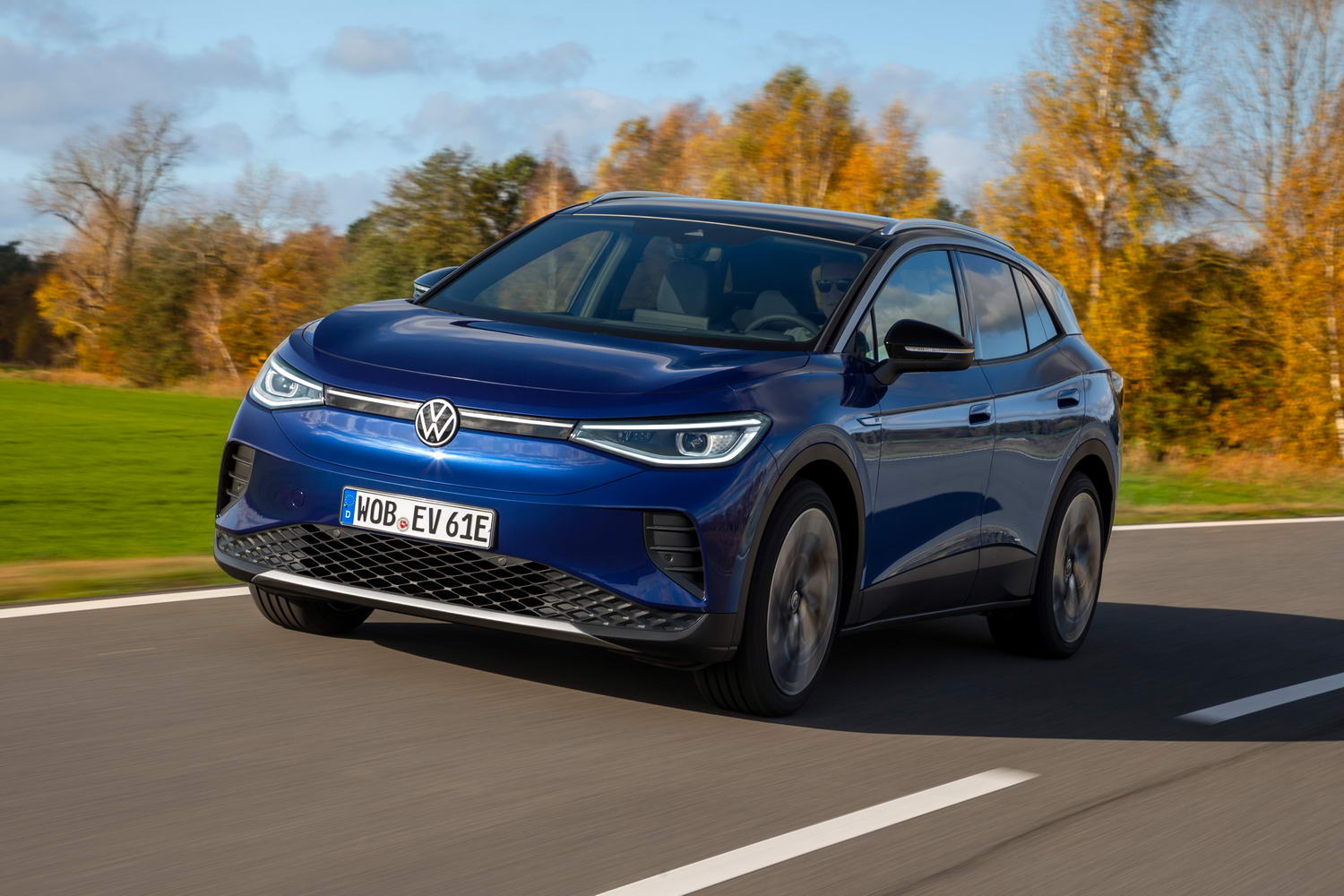Peugeot's previous-generation 3008, which launched in 2016, was a brilliant crossover-SUV, so the French company has big boots to fill with this all-new model. However, while it will be available with hybrid and plug-in hybrid drivetrains this time around, the bigger news is that there are three fully electric variants under the E-3008 banner now. Sitting on the new STLA Medium electric vehicle (EV) platform from Stellantis, the E-3008 will also be at the vanguard of an entire range of products from other manufacturers within the automotive supergroup, so this Peugeot coupe-SUV is a crucial car to its future.
In the metal
The big change for the all-new Peugeot 3008 and E-3008 models is that they are now coupe-SUVs, whereas the old car they're replacing was a more traditional compact crossover with an upright rear hatch. The curvier shape of the E-3008's roofline hasn't just been chosen for the aesthetic value, of course, as it's a slipperier profile that promotes better aerodynamics and thus, in an EV, greater one-shot driving range from a given battery size.
Coupe-SUVs are a contentious body type, though, as many feel the two formerly disparate areas of the car-building world can never be the happiest of bedfellows. That said, the E-3008 is a fine-looking contrivance, as Peugeot's stylists are doing splendid work nowadays. That sloping rear hatch is only allowed to start at a point behind the heads of the rear-seat occupants, rather than in front in an engineering move which is supposed to maintain practicality without losing out on kerb appeal.
Visually, the E-3008 works, although the aero-optimised 20-inch alloys on the GT cars are of a fussy design that won't meet with universal approval. Anyway, much is made in the lighting departments, front and rear, of the marque's signature 'lion-claw' triple-strake design flourishes, while a wider radiator 'grille' is nothing of the sort on this EV - what you think are holes in the matrix are actually filled in with blank plastic. Of course, on the hybrid and plug-in hybrid 3008s, these will be opened up and used for genuine cooling airflow for internal combustion engines.
With its high-set headlight clusters, incorporating Matrix LED technology in GT cars like our test model, and the adoption of the black horizontal line design detail (previously only seen on the rear of cars such as the Peugeot 208) now making its way to the front, the overall visual impact of the E-3008 is a favourable one. It's not beautiful, perhaps, but it's certainly not hideous either.
Inside is another high-quality Peugeot cabin, albeit one centred on the i-Cockpit philosophy the company has held firm to for more than a decade now. This means a low-set, small steering wheel beneath a loftily positioned instrument cluster, but in the 3008 family that cluster has now become part of a whopping 21-inch-wide HD panoramic display. Peugeot refers to this as one unit, although it's technically two screens in one housing: the instrument cluster, in front of the driver, is a non-touch-sensitive display, while the central infotainment uses a touchscreen.
Otherwise, the passenger compartment is good. Configurable 'i-Toggle' touch-buttons are available on a strip below the main unit, there's some interesting and colour-changing ambient lighting housed in the main dashboard and door cards, a smattering of key physical switchgear is preserved, and the nice use of textures and materials gives a suitably premium feel to the E-3008's interior.
It's practical, too, with deep storage bins in that interestingly shaped centre tunnel, although the shaping of the dash results in a glovebox lid that isn't the easiest to open with someone's legs in the way of it. Rear-seat room is on the generous side without being memorably enormous, and the quoted boot space of 520 litres matches that of the car it replaces. Naturally, the sloping rear screen will limit outright cargo capacity but nearly 1,500 litres with the rear seats folded down is not to be sniffed at.
Driving it
As already stated, despite sitting on a platform designed for EVs, there will be models of the new Peugeot 3008 with internal combustion engines fitted. Nevertheless, the E-3008 will form the spearhead of the range, and there are three flavours of electric coupe-crossover to consider.
Buyers can choose from either one motor or two, and then one of two battery sizes as well. That means you can have a single-motor, front-wheel-drive entry-level model fitted with a 73kWh battery pack and offering a range of up to 527km to a single charge. You can then add another, rear-mounted motor to this arrangement for the most powerful model, given the additional moniker of 'Dual Motor AWD', which has the same battery pack and is predicted to have an outright range of around 525km (it's still being homologated as we write this review).
There's then an E-3008 Long Range, which reverts to a single-motor layout, but which gains a whopping 98kWh battery. This one's aiming for a headline 700km range, which is impressive, but again it's being homologated so that number may change a little.
Power varies according to whether you go for the 'plain' E-3008, or either of the Dual Motor AWD or Long Range variants. The former has a peak of 214hp, the middle has up to 326hp and the latter is produces 231hp, so they range from 'fairly potent' to 'wow, that's punchy'.
Neither of the Dual Motor AWD nor Long Range were available to evaluate yet, so our exposure to the E-3008 so far has been solely in the regular 214hp, 73kWh model. This backs up its horsepower with 345Nm of torque, enough to give the vehicle an 8.8-second 0-100km/h time. If that doesn't look all that rapid, there's a reason behind it: the most basic E-3008 weighs 2,108kg.
This translates into a driving experience which is better enjoyed at a leisurely pace rather than a rapid one. If you remember Peugeot as the sporty, engaging marque of the Stellantis super-stable and you're expecting something with 'coupe' in its model make-up to drive with a bit of sharpness, you need to think again. Its sheer mass means it never feels ridiculously quick, and isn't particularly agile either.
It is, however, impeccably refined - in the main. It is particularly noteworthy in terms of the lack of wind noise, that sleek shell of the E-3008 working wonders to minimise external wind blustering from making its way into the passenger compartment. The drivetrain is silent in all modes, Peugeot eschewing any dramatic noise augmentation whether the car is in Eco, Normal or Sport settings, and with the suspension also keeping quiet while it is in action, this is a deeply assured car to travel in at any pace.
When it comes to ride comfort, however, it's a little more of a mixed bag. Like many a modern, heavy car on big wheels, the faster you go, the smoother it gets. The E-3008's damping really seems to come into its own at over 80km/h, and on better-finished road surfaces you'll think it's a delight. Around town, though, where the tarmac can be more cratered and undulating, there are times this single-motor E-3008 felt leaden and even uncomfortable. It may be advisable to do without the 20-inch wheels tested here.
Generally, though, the cultured manners of the E-3008 make it easy enough to like. Performance is smooth and well calibrated, even if the crossover never feels fast. It also does that trick of limiting drivetrain power and torque from mode-to-mode, with Eco down at 170hp/270Nm maximum - while the judgment of the regenerative brakes and steering was unobtrusive enough to make driving it easy. Overall, it's a rather forgiving and unintimidating car to drive, which is entirely as it should be for a family electric SUV like this.
What you get for your money
Peugeot Ireland still hasn't confirmed prices or specifications of the E-3008 as yet, so we will update this section of the review as and when we have more information.
Summary
On first showing, we're moderately impressed by the new Peugeot E-3008... but not blown away. We wouldn't go so far as to say it's underwhelming, but with a 214hp motor powering 2.1 tonnes of car and a 73kWh battery pack only rating as about middling these days, this new zero-emission coupe-crossover-SUV doesn't really do anything significant to move the electric game on.
It may well be that the speed of the 326hp Dual Motor AWD, or the distance capabilities of the 98kWh Long Range model, will give the E-3008 the 'wow' factor it is currently missing. This E-3008 coupe-SUV is therefore very nice, and you could probably justify it on the strength of its styling and interior qualities alone. The price will play into that as well of course.

























